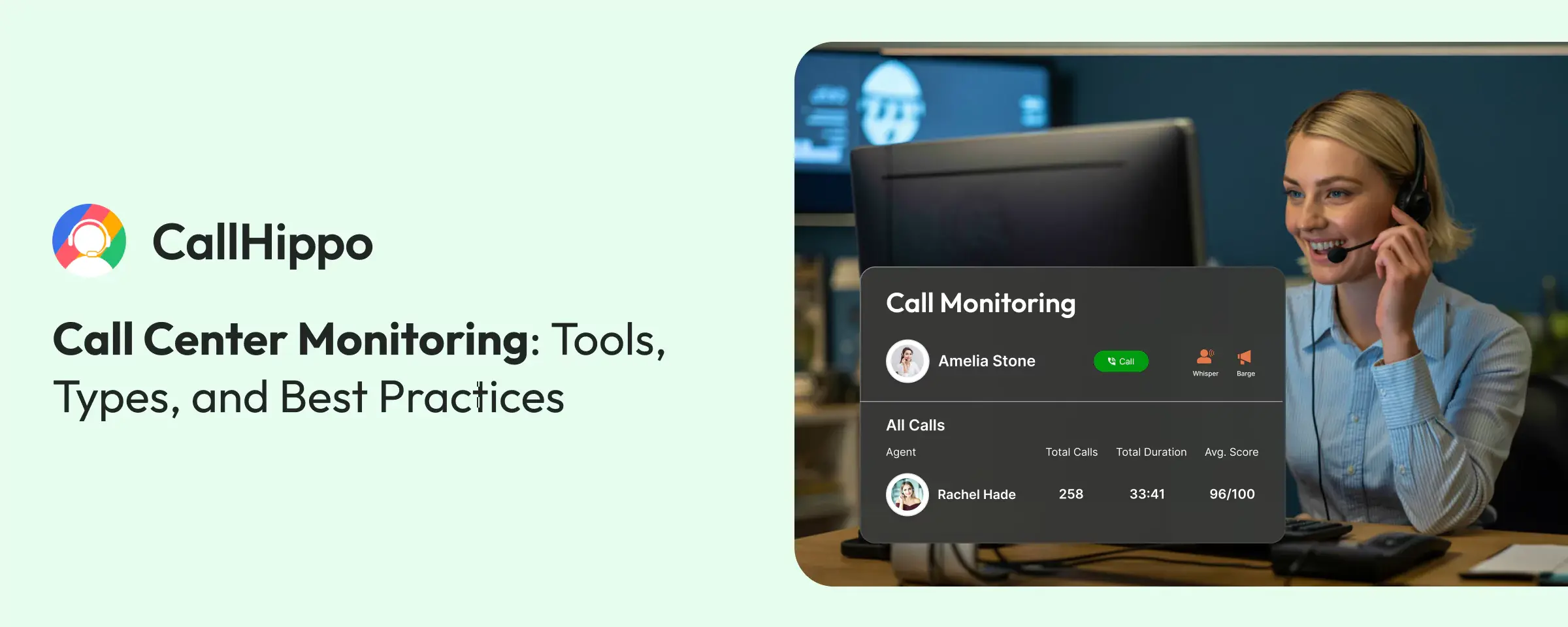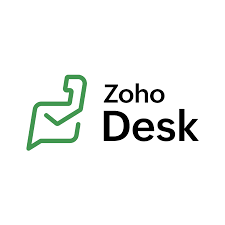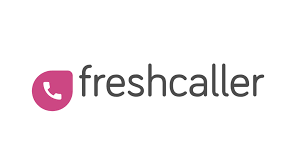Customers getting frustrated with poor call quality and lack of empathetic interaction is not new. A PWC report states that 32% of customers leave a business after one poor interaction. And it’s not just customers! Even call center agents deal with issues like difficulty with complex calls and ineffective training. This involves business risk, such as a lack of customer churn rate.
Call center monitoring can help in such situations. It solves these pain points by improving customer satisfaction and operational efficiency. Let’s see how! We’ll also discuss some of the best call center monitoring tools.
What Is Call Center Monitoring?
Call center monitoring, also known as contact center monitoring, systematically evaluates the conversations between call center agents and customers. It is a form of call center Quality Assurance (QA) or Quality Management (QM) to manage the overall performance of call centers and identify friction points in the customer experience.
Call center monitoring also evaluates whether agents are adhering to industry regulations and company policies. The process involves call recordings, screen activity tracking, live call monitoring, and speech analytics.
What Are The Top Call Center Monitoring Tools?
Many tools make call monitoring easier. Each one has its own strengths and pricing. Here are some of the most used in call center operations:
| Tool | Best For | Price | ||
|---|---|---|---|---|
| 1 | CallHippo | SMBs needing affordable, easy call monitoring | $0/month | Visit Page |
| 2 | Zendesk | Companies monitoring calls + chat/email | $19/agent/month | Visit Page |
| 3 | Zoho Desk | Teams linking calls with ticket management | ?420/user/month | Visit Page |
| 4 | LiveAgent | Businesses needing strong chat + voice support | $9/agent/month | Visit Page |
| 5 | Talkdesk | Large centers wanting analytics + sentiment tracking | $85/user/month | Visit Page |
| 6 | Twilio Flex | Enterprises needing fully customizable solutions | $1/active user hour | Visit Page |
| 7 | Freshcaller | Growing teams wanting simple monitoring + reports | ?999/user/month | Visit Page |
1. CallHippo
CallHippo is a VoIP provider that offers call monitoring software. It helps manage calls, texts, and voicemails from a single dashboard. Managers can listen to live calls, record interactions, and provide real-time coaching. Some features it offers include scoring metrics, detailed reports, CRM integrations, and mobile apps for on-the-go access.
Best for: Small and medium businesses that need affordable and easy-to-use call monitoring.
Pros
- The call quality is consistent with advanced features like call recording, number masking, etc.
- It is easy to set up and use. The interface is clean and easy for non-technical users.
- The power dialer, click to call, and IVR features are excellent to use.
Cons
- Certain advanced features are not very intuitive.
- At times, you cannot make a call to a particular country without any specific indication.
Pricing
- Basic: $0/month
- Starter: $18/month
- Professional: $30/month
- Ultimate:$42/month
Track live conversations, review recordings, and guide your team to better results with CallHippo.
2. Zendesk
Zendesk is a well-known customer support platform. The voice suite offers call monitoring features like listening, recording, and, in many plans, transcripts. Zendesk also lets teams monitor other channels such as email, chat, and social media. Its reporting tools help managers track trends and coach agents. Some advanced tools, like transcription, may need add-ons.
Best for: Companies that want to monitor calls and other channels like chat and email in one place.
Pros
- Users have a complete view of the entire customer service journey in one place.
- The ticketing system is very easy to use, and the automation features are excellent.
- There are multiple built-in integrations and support for third-party integrations.
Cons
- The UI is laggy and looks old.
- Customizing SLAs and workflows is not simple. It takes time.
Pricing
- Support team: $19/agent/month
- Suite team: $55/agent/month
- Suite professional: $115/agent/month
- Suite enterprise: $169/agent/month
3. ZOHO Desk
Zoho Desk is a multi-channel help desk that combines ticket management with call monitoring. Managers can attach call recordings to a ticket. This makes it easier to review. It also includes dashboards, analytics, and smooth integration with other Zoho tools. There are some features, like live listening, that may only be available through add-ons.
Best for: Teams that need call monitoring linked directly to ticket and case management.
Pros
- The interface is clean and user-friendly.
- You can centralize different communication channels in one place.
- It is very easy to optimize both internal business operations and customer interactions.
Cons
- You cannot add external email addresses as CC recipients on automated alerts.
- The learning curve is steep due to many configuration options.
Pricing
- Express: Rs 420/user/month
- Standard: Rs 800/user/month
- Professional: Rs1400/user/month
- Enterprise: Rs 2400/user/month
4. Live Agent
LiveAgent works well for businesses that need both chat and voice support. It offers call monitoring, recording, and playback. Managers can also review chat transcripts and customer history in one place. This makes it easier to check performance across different channels. Live monitoring features may depend on the plan.
Best for: Businesses that want strong chat and voice support with monitoring in one tool.
Pros
- This tool has a unified inbox for all channels.
- It offers excellent self-management capabilities.
- Live Agent is very easy to configure and set up.
Cons
- The reporting is complex compared to other tools.
- It needs improvement while integrating with the WhatsApp Business API.
Pricing
- Small business: $9/agent/month
- Medium business: $24/agent/month
- Large business: $39/agent/month
- Enterprise: $59/agent/month
5. Talkdesk
Talkdesk is designed for larger call centers. It offers real-time dashboards, detailed analytics, and in many plans I tools like sentiment analysis. Supervisors can track customer tone during calls and step in when needed using call whisper or barge-in features. It also integrates with many CRMs and business tools. Some advanced options are only in premium plans.
Best for: Large call centers that want advanced analytics and sentiment tracking.
Pros
- It is easy to switch between different communication platforms and assist customers.
- The tool offers easy customization and has an intuitive user interface.
- It has many features to review SLAs for the agents and the number of calls.
Cons
- The reporting system is complex to use, and it must have an in-depth guide.
- The customer ticketing system must consider an upgrade.
Pricing
- CX Cloud Digital Essentials: $85/user/month
- CX Cloud Voice Essentials: $105/user/month
- CX Cloud Elite: $165/user/month
6. Twilio Flex
Twilio Flex is a customizable platform. It lets businesses design their own workflows. There are features like call monitoring, recording, and integrations with analytics tools. Since it’s a flexible framework, some features require more setup or development work. This gives teams freedom but also takes more time.
Best for: Enterprises that want a fully customizable monitoring solution.
Pros
- The tool has a simple design and an easy interface.
- It is an excellent multichannel integration platform and easily integrates with Zendesk.
- You can automate engagement with customers on platforms like WhatsApp and Telegram.
Cons
- Technical glitches do not allow users to make calls or send text messages.
- It is difficult to customize or adjust schedules for holidays.
Pricing
- Per hour pricing: starting at $1/active user hour
- Per user pricing: starting at $150/named user
7. Freshcaller
Freshcaller, part of Freshworks, is built for growing teams. It includes call recording, detailed call logs, and, in some plans, live monitoring. Teams can also track wait times, missed calls, and resolution rates. It gives smaller businesses the features they need without being too complex.
Best for: Growing teams that want simple call monitoring with clear reports.
Pros
- The reporting and analytics tool optimizes team performance.
- The automation features and canned responses save time.
- Implementing the tool is easy, and it has a great customer support team.
Cons
- The customization option for reports needs improvement.
- Some advanced features are not very intuitive.
Pricing
- Growth: Rs 999/user/month
- Pro: Rs 2799/user/month
- Enterprise: Rs 4999/user/month
Benefits of Effective Call Center Monitoring
If you implement a call center monitoring software in your company, you will have numerous benefits. Here are a few of the benefits:
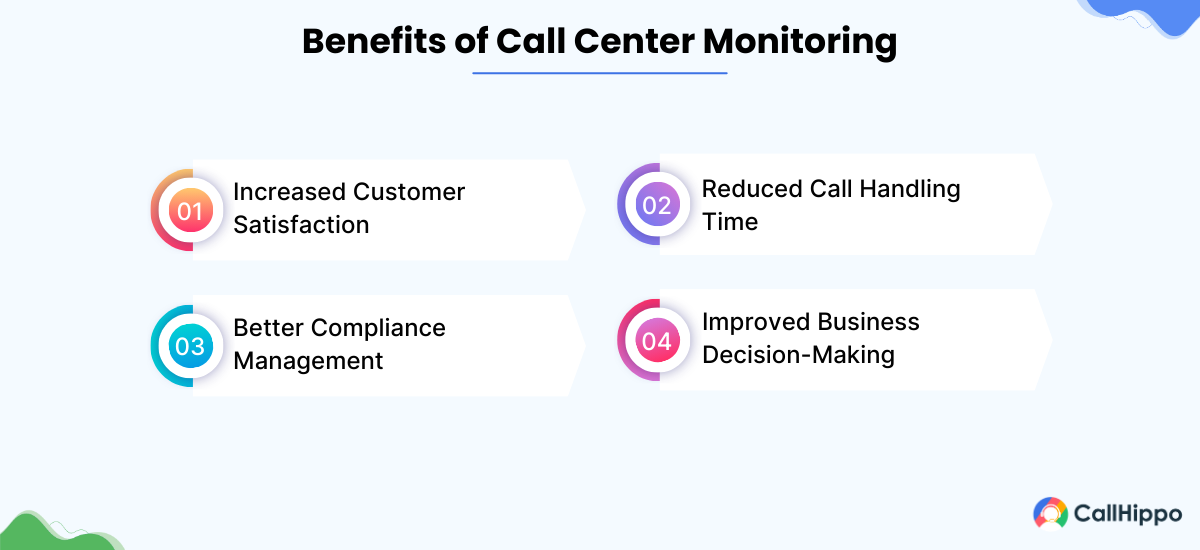
1. Increased Customer Satisfaction
When you monitor the customer interactions, you can evaluate where your agents fall short and also offer counteractive measures. You can identify customer sentiment, emotion, and intent. This will help you give the right response in the present, and you can anticipate their future behavior. And when customers’ issues are solved faster with the right solution, they will be automatically satisfied.
2. Reduced Call Handling Time
There are situations where agents spend too much time resolving calls. With monitoring, you can know the accurate reason. Maybe they don’t know the system well. Maybe they ask customers to repeat too often. If the managers are acquainted with these problems, they can train agents. And this will result in a fast handling time and lower call transfer rates.
3. Better Compliance Management
With call center monitoring, you can ensure that agents remain compliant with legal and industry regulations. This will reduce the risk of violation. During compliance audits or legal reviews, businesses can get reference from interaction logs and call recordings that create an audit trail.
4. Improved Business Decision-Making
Alongside improving agent performance, call cell monitoring also helps understand what customers really think. If many calls mention the same product issue, the company can fix it. If customers often ask for a new feature, managers can report it. Data from monitoring guides better decisions across the company.
- Regular monitoring can increase customer retention by 20% and agent productivity by 15%!
Methods of Call Center Monitoring
There are several ways to monitor customer interactions in a call center. Each method has its own strengths, and most centers use a mix of them to get a full picture of performance. Here are some of the most common approaches:
1. Live Call Monitoring
Live call monitoring allows supervisors or quality assurance managers to observe conversations in real-time. They can discreetly monitor ongoing interactions to evaluate how agents manage customer needs, or use advanced features to assist when circumstances require intervention.
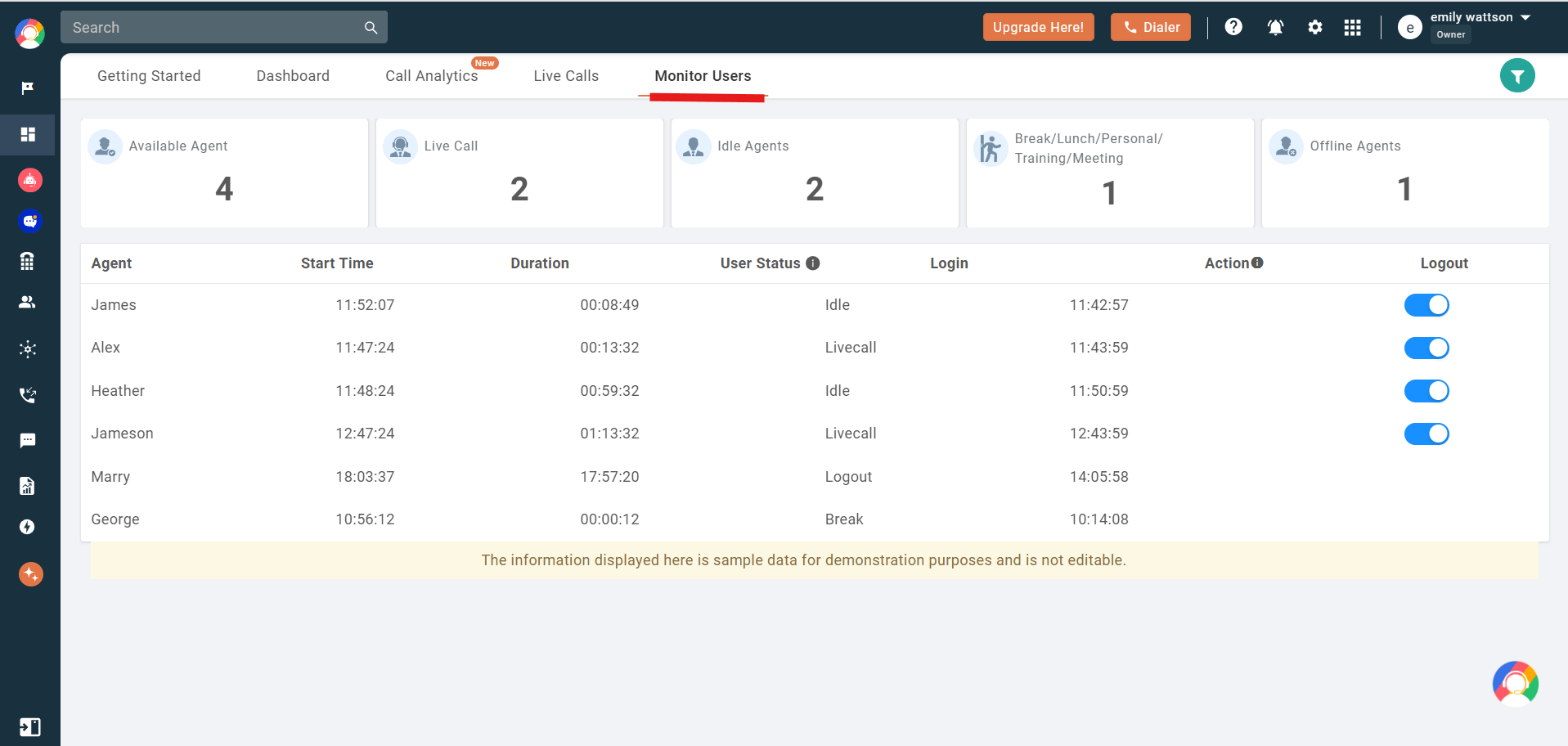
The agent receives their manager’s direction, but customers remain completely unaware. In more pressing situations, supervisors can use call barging, where they enter the conversation and communicate directly with both the agent and customer. Some systems even provide call intercept, which transfers sensitive or high-risk calls immediately to management personnel.
2. Call Recording & Playbacks
Another extensively utilized method involves call recording. Conversations are documented, stored securely, and later examined by managers. It is helpful in quality assurance, dispute resolution, and compliance monitoring. It also generates training materials for new agents, who can review them as examples.
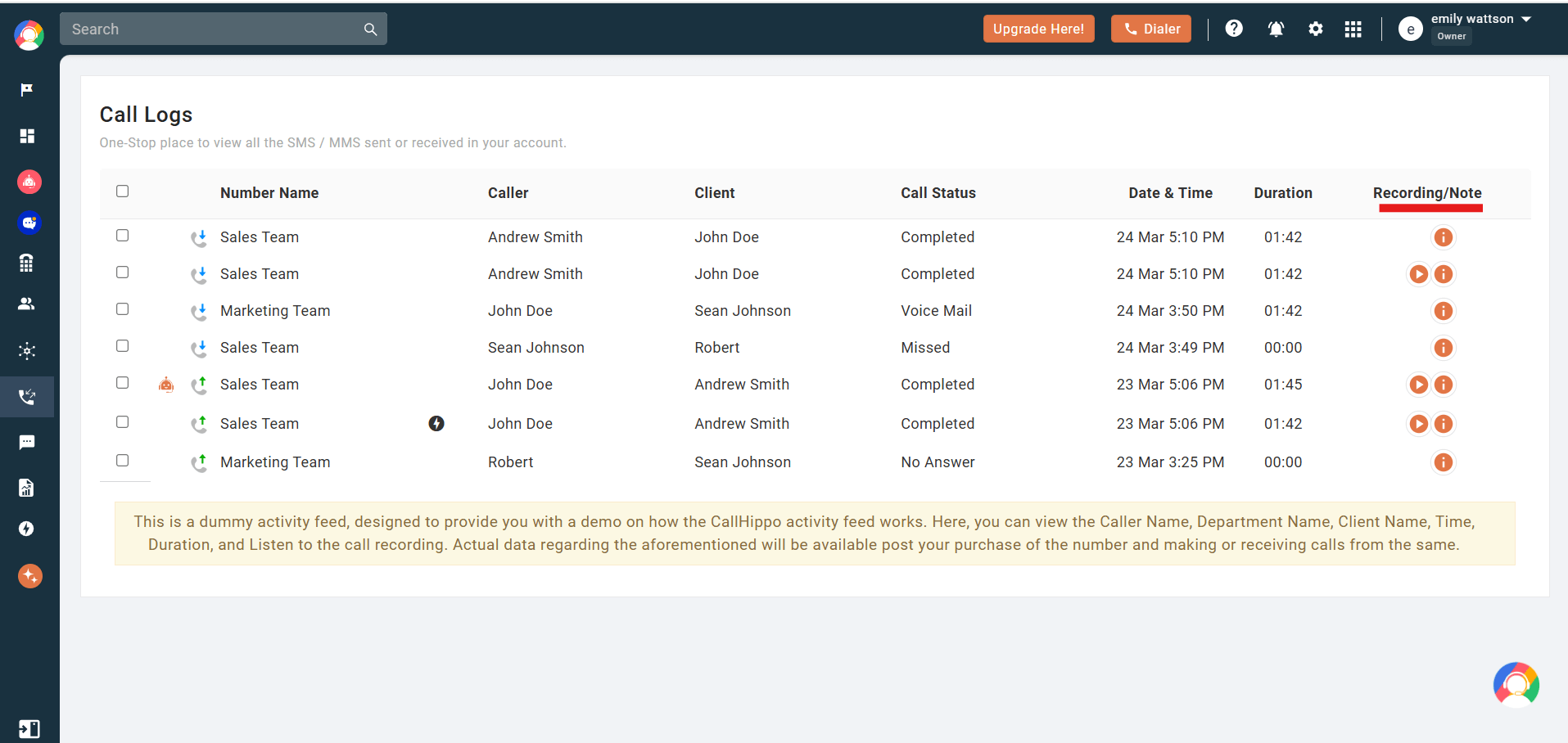
There are multiple ways recordings can be established. Some centers deploy full call recording, where every conversation gets automatically preserved. Others select targeted recording, which concentrates only on specific interactions. In particular cases, agents or supervisors can activate on-demand recording, where they document only certain portions of calls.
3. Speech & Sentiment Analysis
Using artificial intelligence, organizations can evaluate the tone, pace, and language utilized during customer interactions. This methodology is called speech and sentiment analysis. The system transforms speech into text, examines conversations for keywords or phrases. It also detects emotional signals such as frustration, anger, or satisfaction. They can even identify unusual patterns, like prolonged silences or frequent interruptions, which often suggest confusion or tension within calls.
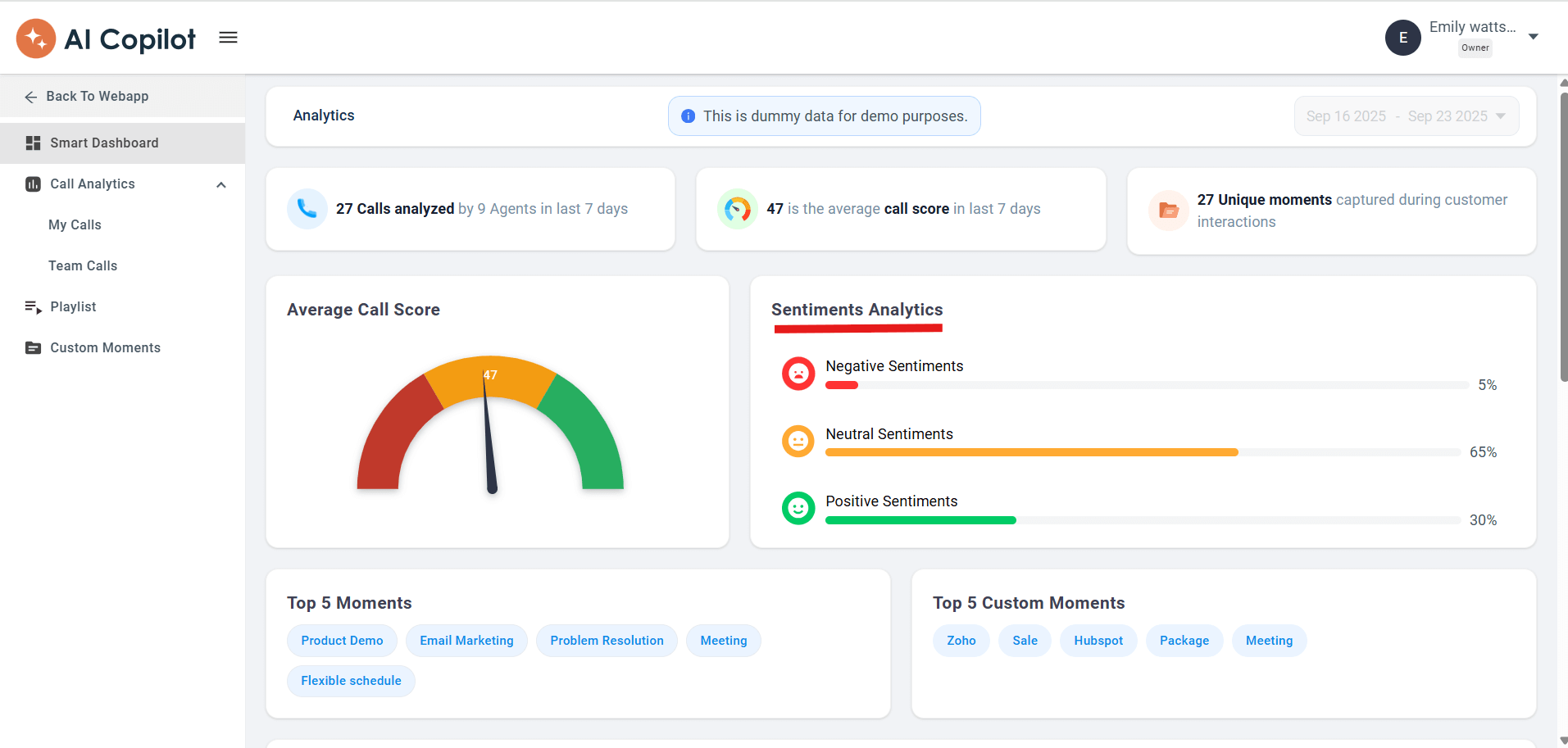
4. Screen Monitoring & Recording
Agents regularly navigate multiple systems while serving customers, and errors can emerge during system navigation. Screen monitoring displays exactly what agents are accomplishing on their computers during calls. With this method, managers can observe if agents experience difficulty locating information, require excessive time transitioning between applications, or create mistakes while inputting data.
5. Whisper Coaching and Barge-In
Whisper coaching permits supervisors to communicate directly with agents during active calls without customer detection. This helps mentor new or challenged agents through complex situations. Barge-in extends one step beyond. Here, supervisors participate in conversations and engage with both customers and agents. It is helpful when situations intensify or when customers require immediate attention from senior representatives.
6. Post-Call Analytics and Reporting
Post-call analytics provide meaningful insights into performance developments over extended periods. It analyzes recorded calls, agent performance evaluations, and customer feedback surveys to recognize patterns.
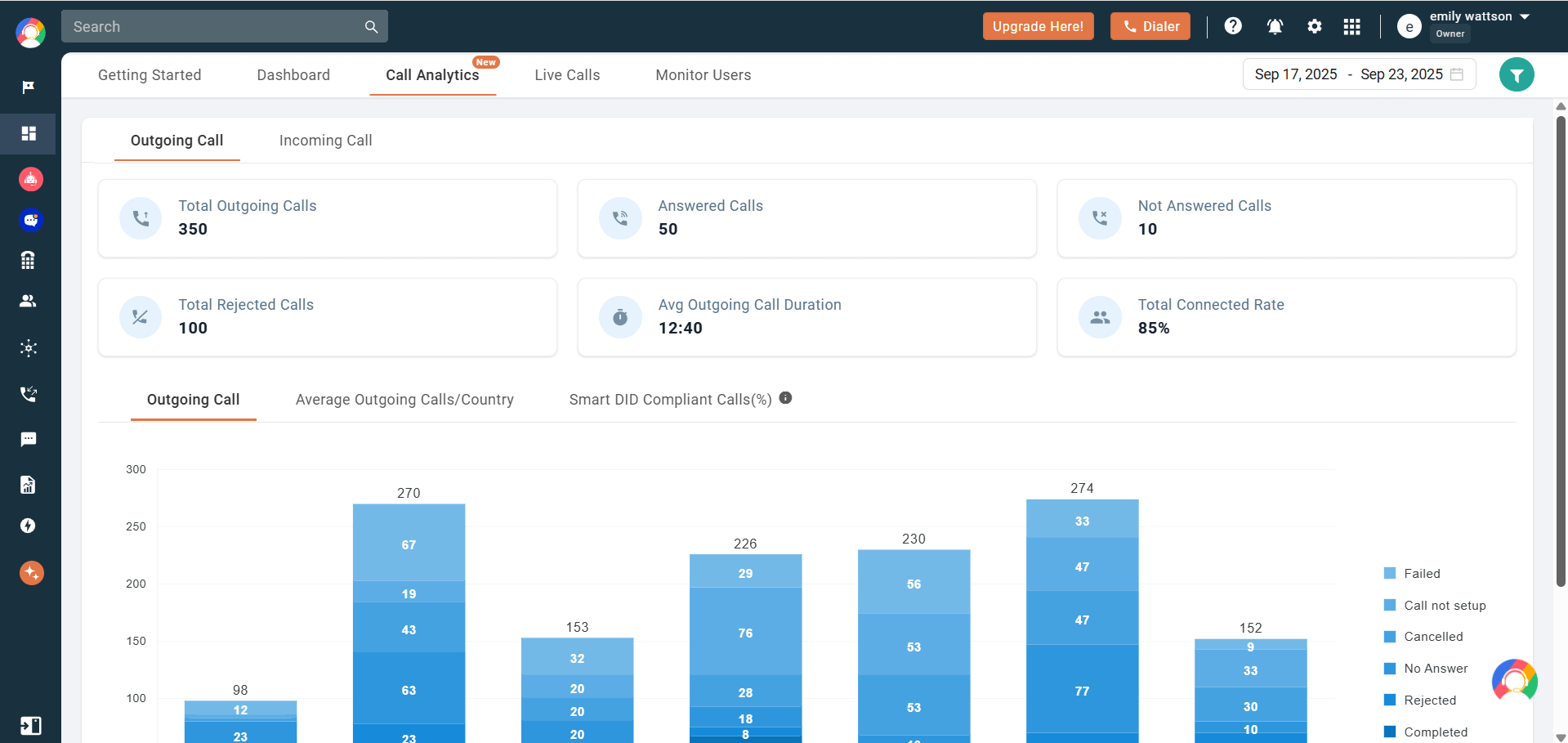
Monitoring software generally has reports that include information like average handle time, first call resolution, and customer satisfaction. With them, managers can recognize where agents perform well and where they require additional guidance. It also exposes systemic issues, such as recurring complaints or knowledge deficiencies.
- 78% customers back out of a purchase due to a negative experience.
How to Monitor Call Center Performance Effectively?
So, how do you actually monitor call center performance in practice? The key is to follow a structured process that blends data, tools, and people. Below are the main steps:
1. Setting KPIs and Metrics
First, define your objectives. Your goals should be SMART: specific, measurable, achievable, relevant, and time-bound. Once you know what you want to achieve, choose the right Key Performance Indicators (KPIs) to track progress.
Here are some of the most common KPIs:
- Customer Satisfaction (CSAT): CSAT measures how customers perceive their interactions.
- First Call Resolution (FCR): FCR tracks resolution success rates.
- Average Handle Time (AHT): AHT captures total interaction duration, including talk time and wrap-up.
- Call Abandonment Rate: This reflects caller patience thresholds, which fluctuate based on factors like time of day, issue urgency, and customer demographics.
- Service Level: The service level KPI measures response speed within predetermined timeframes.
- Net Promoter Score (NPS): NPS indicates customer advocacy likelihood.
- Agent Occupancy Rate: Agent occupancy tracking reveals productivity patterns.
2. Using Call Center Monitoring Software
Using call center monitoring software streamlines evaluation processes considerably, though implementation success depends heavily on realistic expectations and proper configuration. Effective call center monitoring software should:
- Record Calls: It maintains interaction records for quality review and compliance verification. Storage and retrieval systems require careful planning.
- Provide Real-Time Dashboards: It delivers current visibility into operational metrics. Dashboard effectiveness depends on selecting actionable indicators.
- Offer Speech and Sentiment Analysis: It identifies emotional indicators and conversation patterns. The accuracy varies significantly across different accents and communication styles.
- Automate Scoring: It applies consistent evaluation criteria, though human review remains essential for nuanced situations and quality assurance validation.
- Integrate with CRM: It combines interaction history with customer context. But the integration often proves more complex than vendors initially estimate.
With properly implemented software, managers can identify performance trends, track operational metrics, and make decisions based on comprehensive data analysis.
3. Regular Agent Training And Feedback
Data becomes valuable only when systematically converted into performance improvement opportunities. Effective coaching sessions transform monitoring insights into skill development. Provide feedback that is:
- Timely: Schedule reviews while interactions remain fresh in memory rather than waiting for distant quarterly evaluations that lose relevance.
- Specific: Reference particular behaviours and decisions using actual recordings as concrete examples, avoiding vague generalizations that offer limited guidance.
- Targeted: Address identified skill gaps through customized training approaches based on individual performance patterns and metric analysis.
Through consistent developmental support, agents have better confidence. They show improvement in service delivery and reduced error rates over time.
4. Leveraging AI and Automation for Monitoring
Modern monitoring tools now include AI features that can save time and improve accuracy. They can:
- Automatically score calls based on tone, keywords, or compliance.
- Detect customer emotions like frustration or satisfaction.
- Highlight patterns of non-compliance or risky interactions.
But while automation speeds up the process, it should not replace human review. The best results come from combining AI-driven insights with supervisor judgment.
Most Important Call Center Monitoring Software Features
While buying a call center monitoring software, make sure it has these important features:
1. Real-Time Dashboards
Supervisors need to see what happens in the call center. Real-time dashboards provide this visibility. It shows which agents are on active calls, the number of customers in the queue, and the call duration.
With this information, managers can step in immediately when problems arise. They can assign more agents during peak hours or reroute calls to reduce customer frustration.
2. Multi-Channel Monitoring (Voice, Chat, Email)
Customers now always prefer live chat, email, or even social platforms to reach businesses. That is why monitoring should extend across every channel.
When supervisors track performance in voice calls and written communication, they get a complete view of how customers get support. Multi-channel monitoring lets customers receive the same level of service quality no matter how they choose to get in touch.
3. Speech and Sentiment Analysis
The words spoken during a call do not always capture the full picture of the customer experience. Tools that include speech and sentiment analysis go deeper. These tools can detect tone, pace, and mood.
They can flag calls where customers sound frustrated, stressed, or unhappy. This helps supervisors intervene when needed and provide a strong base to train agents and handle sensitive conversations.
4. Integration with CRM Systems
Monitoring becomes far more meaningful when it is connected to customer history. Integrating monitoring tools with CRM systems helps managers. They can review how the call went and the customer’s past interactions, purchase history, and support records. This context makes it easier to understand why an issue occurred and what patterns may be emerging.
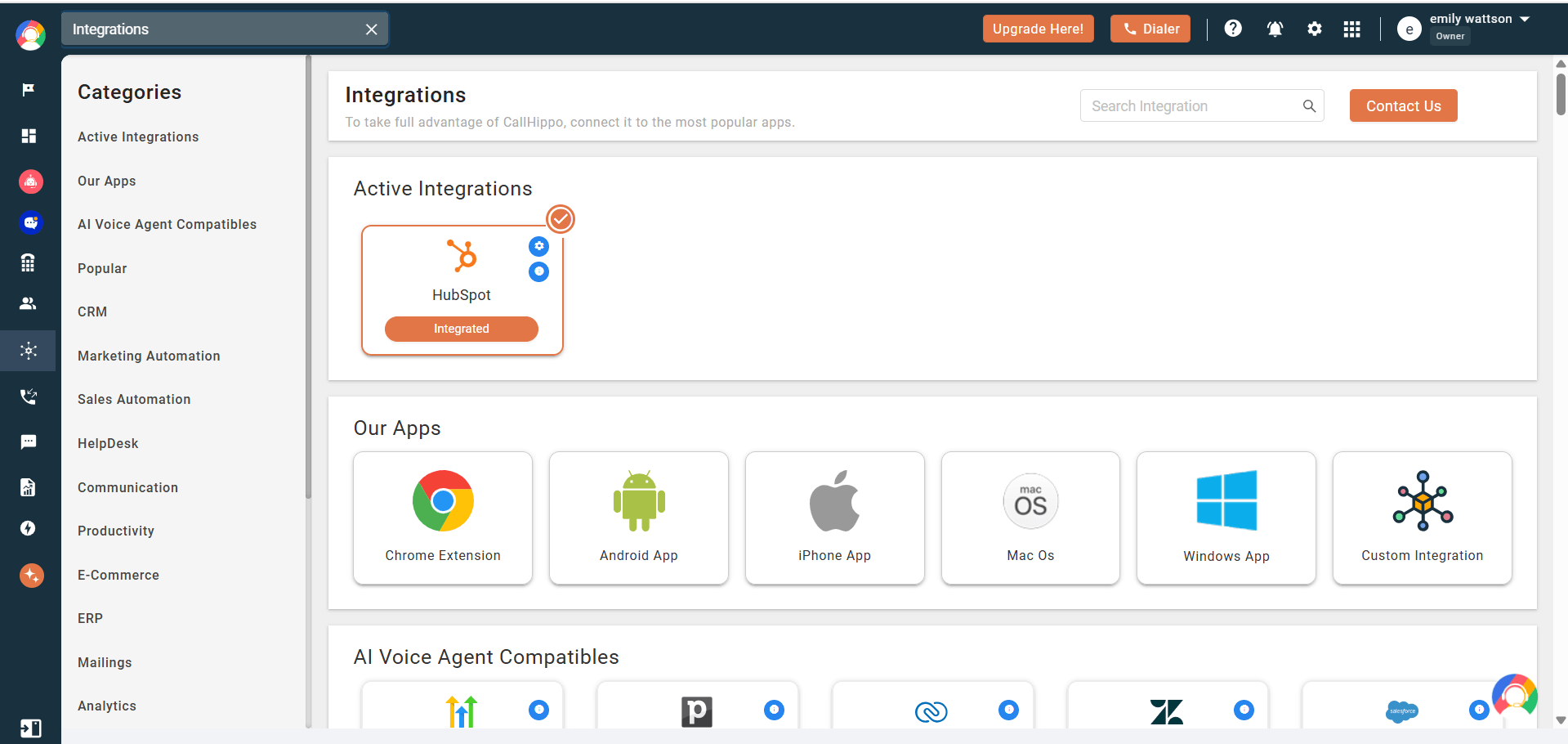
Best Practices for Contact Center Monitoring
Monitoring is only useful when it is used in the right way. These best practices make sure that supervisors use monitoring to track performance and create positive outcomes for both agents and customers.
1. Define Clear Monitoring Goals
Every monitoring effort should begin with a clear purpose. You need to define your objectives. Do you want to reduce average handle time, improve customer satisfaction, ensure compliance, or increase first-call resolution rates? Without clear goals, monitoring can become unfocused and fail to deliver real results.
2. Balance Monitoring With Employee Privacy
Employees should feel supported rather than constantly watched. To maintain this balance, companies need to be open about the monitoring process. When customer service representatives understand that monitoring will help them improve, they will embrace it. You need to respect privacy and limit unnecessary access to recordings or screen captures. It also builds trust between agents and management.
3. Act On Insights With Coaching And Training
The real value of monitoring comes when businesses act on the insights gathered. When managers review calls with agents, they can highlight positive examples and offer constructive feedback. The ongoing coaching sessions can help agents improve faster and feel more confident in their roles.
4. Continuously Refine Monitoring Processes
Customer expectations and business needs do not stay the same. The goals, checklists, and KPIs for monitoring should be reviewed and updated regularly to keep pace with changes. A process that worked a year ago may no longer be relevant if new products have been launched. You need to refine monitoring practices on an ongoing basis. Businesses must make sure that the process continues to deliver value.
How to Create a Call Center Monitoring Checklist?
With a monitoring checklist, businesses can create structure and consistency. Agents can be evaluated fairly, and no important aspect of customer service is overlooked:
1. Define Core Monitoring Objectives
The first step is to create a checklist and decide on the objectives. This could be improving customer satisfaction scores, reducing call transfers, or ensuring regulatory compliance. Writing down these objectives ensures the checklist always aligns with business goals.
2. Identify Key Performance Metrics (KPIs)
Next, you need to select the KPIs that will be measured. Metrics such as average handle time, first call resolution, and customer satisfaction provide clear, measurable data that reflect performance. Choosing the right set of KPIs keeps the checklist focused on what matters most.
3. Standardize Evaluation Criteria for Agents
A checklist is only fair if it evaluates everyone consistently. That is why it is important to create a standardized scorecard with the same criteria for all agents. Evaluate whether agents greet customers properly. Listen attentively, resolve issues, and close calls professionally to ensure a uniform process that is easy to track over time.
4. Include Multi-Channel Monitoring Steps
If the call center handles multiple channels such as chat and email, the checklist should include them as well. You need to evaluate response times, professionalism, and accuracy across these channels to ensure that customer service quality remains consistent everywhere.
5. Schedule Regular Review and Feedback Sessions
A checklist is only effective if it is used regularly. Scheduling weekly one-on-one reviews and monthly team feedback sessions ensures that monitoring insights lead to real improvement. Consistency helps agents progress steadily rather than waiting months to learn about their performance.
6. Update the Checklist Based on Business Needs
Finally, the checklist should not remain static. Whenever new services are introduced, customer expectations change, or compliance rules are updated, the checklist must be adjusted. This makes sure the monitoring process stays relevant and useful in a fast-changing environment.
Challenges in Call Center Monitoring and How to Overcome Them
Monitoring is useful but comes with hurdles. Here are some of the challenges. I have also mentioned how you can overcome them:
Managing High Call Volumes: In large centers, managers cannot review all phone calls. And the solution for that is sampling. Managers can pick a set of calls daily or weekly. They can use automation to flag unusual calls, like ones with negative sentiment or long duration.
Balancing Automation With Human Oversight: AI and automation can misread tone or context. You must always combine automated scoring with human checks. This will help you avoid errors and keep the monitoring process fair.
Dealing with Remote and Hybrid Teams: Remote work makes live monitoring harder. In such situations, a cloud-based monitoring tool helps. With screen sharing and online dashboards remote oversight is easy.
Ensuring Data Security and Privacy: When you monitor and record calls, you are storing personal information. Be sure to follow rules like GDPR or HIPAA. You can encrypt recordings, control access, and set policies for storage and deletion.
Conclusion
Call center monitoring is not about watching over agents. It is mostly to improve service, make customers happy, and keep operations smooth. With the right tools, clear KPIs, and fair practices, monitoring becomes a growth driver.
In small support teams or large contact centers, center quality monitoring software gives you the visibility to make smart decisions. You can start with clear goals, choose the right software, and act on insights. Over time, both agents and customers will notice the difference.
FAQs
1.What is the purpose of call center monitoring?
Call center monitoring helps you understand how your team is performing and where customers might be struggling. It’s your way to spot coaching opportunities, ensure quality service, and stay compliant with regulations while keeping both customers and agents happy.
2. How do you monitor call center performance?
Set clear goals, use monitoring tools to track key metrics, and listen to some calls regularly. But don’t forget the human element – have regular chats with your agents about what they’re seeing and how you can help them improve.
3. What features should call center monitoring software have?
Look for software that records calls, provides real-time dashboards, and works across all your communication channels. Bonus points if it can analyze customer sentiment and integrate with your CRM. Good reporting features are essential so you can actually use all that data to make things better.
4. What are the benefits of call center call monitoring?
Some of the benefits of call center monitoring include compliance with industry standards, improvement in agent performance, and customer satisfaction.
5. How is AI changing call center monitoring?
AI is changing call center monitoring by automatically scoring calls, detecting sentiment, and flagging issues. It saves time and gives faster insights. But it still needs human review for accuracy.

Subscribe to our newsletter & never miss our latest news and promotions.
